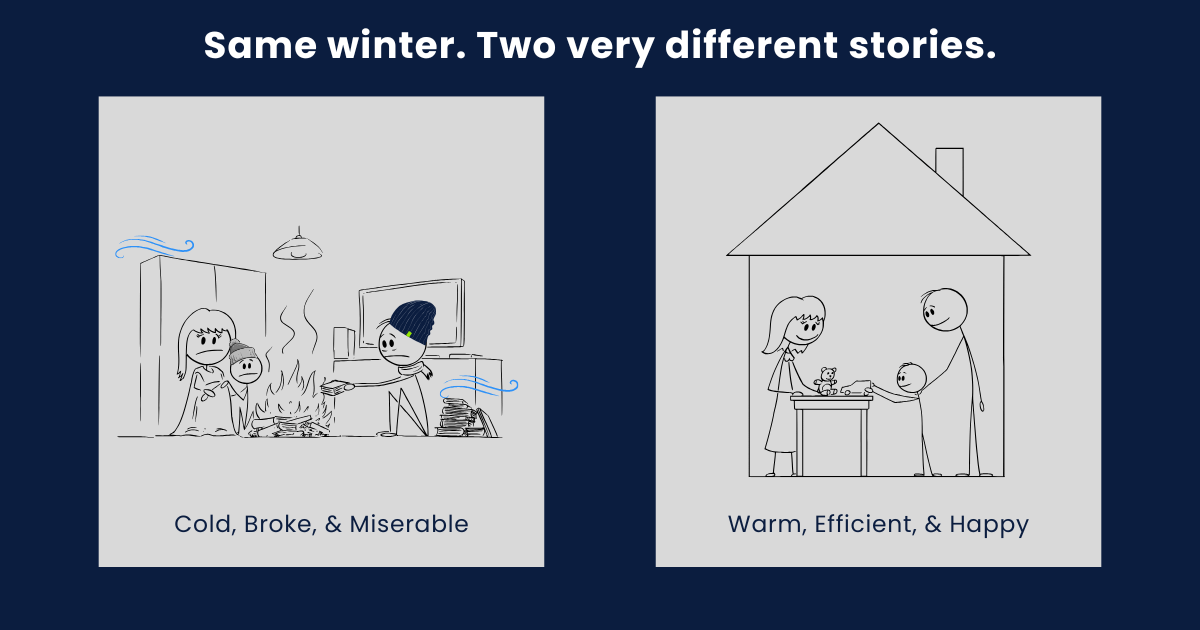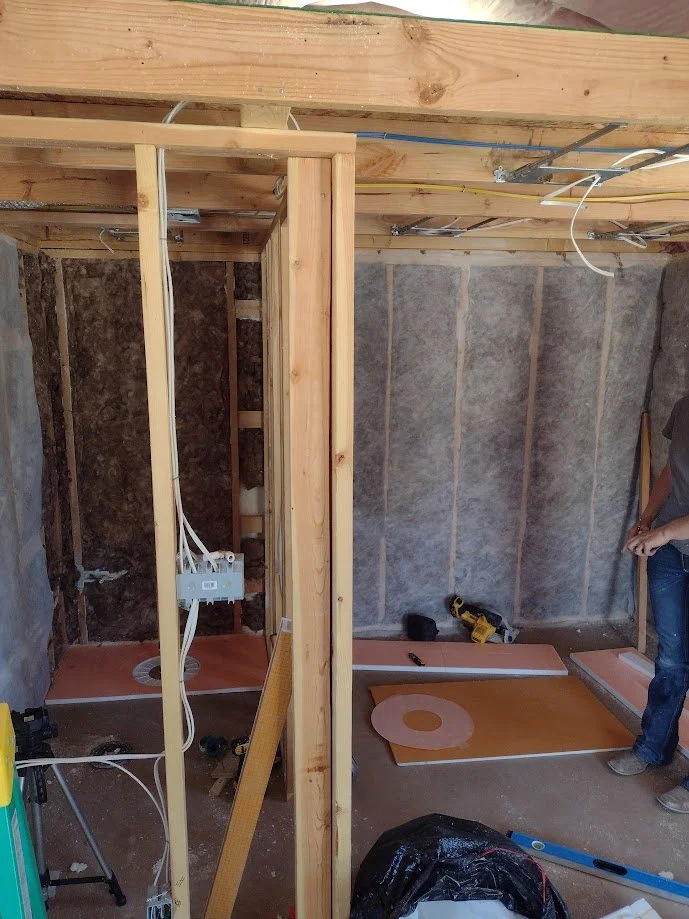Increasing R-Value: Smart Tricks to Keep Your Home Cozy and Your Wallet Happy
If your home feels like a walk-in freezer in winter and a sauna in summer, it’s time for a wake-up call: your insulation might not be doing its job.
The secret? It all starts with R-value—the number that tells you how well your insulation is holding up against heat flow. The higher the number, the better your home is at keeping the good temps in and the bad ones out. A low R-value? That’s basically leaving your windows open in a blizzard.Are your energy bills through the roof? Your insulation's R-value might be the culprit! Let's explore how boosting your home's insulation can transform your comfort and save you money.
What Is R-Value and Why It Matters
R-value measures how well insulation resists heat flow. Think of it as your home's defense shield – the higher the number, the better the protection. When your shield is weak, heat escapes in winter and invades in summer, causing your heating and cooling costs to skyrocket.
Different insulation materials offer varying R-values per inch of thickness:
Fiberglass batt insulation: R-2.9 to R-3.8 per inch
Loose fill insulation (cellulose): R-3.2 to R-3.8 per inch
Foam insulation (spray): R-3.7 to R-6.5 per inch
Rigid foam boards: R-4 to R-6.5 per inch
Your actual energy efficiency is affected by several factors beyond just the insulation material:
Installation quality (gaps reduce effectiveness)
Moisture levels (wet insulation performs poorly)
Air leaks around windows, doors and outlets
Thermal bridging through wall studs and sheathing
Finding Your Home's Insulation Weak Spots
Before adding more insulation, determine where your home is losing energy. Finding areas with inadequate insulation R-value is your first step toward fixing the problem.
Check these common trouble areas:
Attics: Heat rises, making your attic the prime escape route. Measure your existing insulation's thickness – most homes need 13-18 inches for proper R-value.
Exterior walls: Especially uninsulated wood frame walls in older homes. These can account for up to 35% of your heat loss.
Floors over crawl spaces: Cold floors often signal insulation problems below. Adding insulation here improves comfort dramatically.
Wall cavities: Empty wall cavities welcome energy loss. Many homes built before 1980 have inadequate insulation in these spaces.
Quick Test: On a cold day, touch your interior walls and ceiling. If some feel colder than others, you've likely found where you need to focus on increasing R-value.
Smart Ways to Increase R-Value in Existing Homes
1. Layer Different Insulation Types
Think of this like dressing for winter – multiple thin layers often outperform one thick layer! When adding insulation, combine different materials to address various heat transfer methods:
Batt insulation as your base layer (R-13 to R-21)
Rigid foam boards as your middle layer (adds R-3 to R-6 per inch)
Reflective insulation as your top layer (especially effective in attics)
This approach doesn't just add R-values together – it creates a more effective system by stopping different types of heat transfer and sealing those pesky air leaks.
2. Tackle Thermal Bridging
Thermal bridging happens when heat bypasses your insulation through wall studs, floor joists, and other framing materials. It's like having a bucket with tiny holes – no matter how good your bucket is, water still escapes!
In an uninsulated wood frame wall, up to 25% of your wall area might be thermal bridges. The solution is adding continuous insulation over studs to create an unbroken thermal barrier that dramatically increases your effective R-value.
3. Fill Empty Wall Cavities
Those empty wall cavities in older homes are prime real estate for improving insulation's R-value without major renovations.
Add insulation to existing walls with minimal disruption:
Blow insulation through small drill holes in exterior walls
Use loose fill insulation for larger spaces like attics
Consider foam insulation for superior air sealing and R-value per inch
Exterior Insulation Approach
If you're already planning to replace your exterior siding, you've got a golden opportunity to boost your home's R-value without losing interior space!
Add rigid foam boards to exterior walls before new siding
Increases wall R-value by 3-5 points (or more with thicker insulation)
Eliminates most thermal bridging through wall studs
Creates a more comfortable home with consistent temperatures
Reduces heating and cooling costs by up to 20%
Consider the "Perfect Wall" system
Places continuous insulation outside the wall sheathing
Keeps structural elements warm and dry year-round
Creates superior thermal performance in all climate zones
How Much Insulation Do You Need?
For example, if you live in climate zone 5 and your attic has only 6 inches of batt insulation (about R-19), you'd need to add more insulation to reach the recommended R-49.
Different climate zones require different insulation levels. Determining how much insulation you need depends on where you live and which part of your house you're insulating:
DIY vs. Professional Installation
While some projects like adding attic insulation can be DIY-friendly, professional installation ensures maximum R-value from your building materials.
DIY Challenges:
Easy to accidentally compress batt insulation (reducing its R-value by up to 50%)
Difficult to achieve complete coverage in oddly-shaped spaces
Hard to properly address air leaks that bypass insulation
Challenging to determine proper vapor barrier placement in different climate zones
Professional Benefits:
Proper air sealing before insulation installation
Access to specialized equipment for blow insulation in wall cavities
Expertise in maintaining proper insulation density and thickness
Knowledge of building science and moisture management
We recently worked with two neighboring homes with identical floor plans. The first homeowner attempted a DIY insulation upgrade in his attic and walls. Despite his best efforts and spending a full weekend, his winter heating bills only dropped by 8%. His neighbor hired our professional team, and we identified several crucial air leaks his DIY neighbor missed, installed properly-rated insulation at the correct density, and ensured complete coverage in all areas. The result? A 27% reduction in energy bills and a much more comfortable home - for just a modest increase in initial investment.
Benefits of Increasing Your Home's R-Value
Investing in your home's insulation R-value pays off in multiple ways:
Lower heating and cooling costs (typically 15-30% savings)
More consistent temperatures throughout your house
Reduced outside noise infiltration
Higher property value (energy efficiency is a major selling point)
Lower carbon footprint
Extended roof life (proper attic insulation prevents ice dams)
Ready to Boost Your Home's R-Value?
At Argyle Bros Insulation, we're experts at maximizing insulation performance. We understand the building science behind effective insulation – from addressing thermal bridging to ensuring proper installation that maintains the full R-value of your insulation materials.
Contact us today for a free insulation assessment and transform your home into the cozy, energy-efficient haven you deserve!






